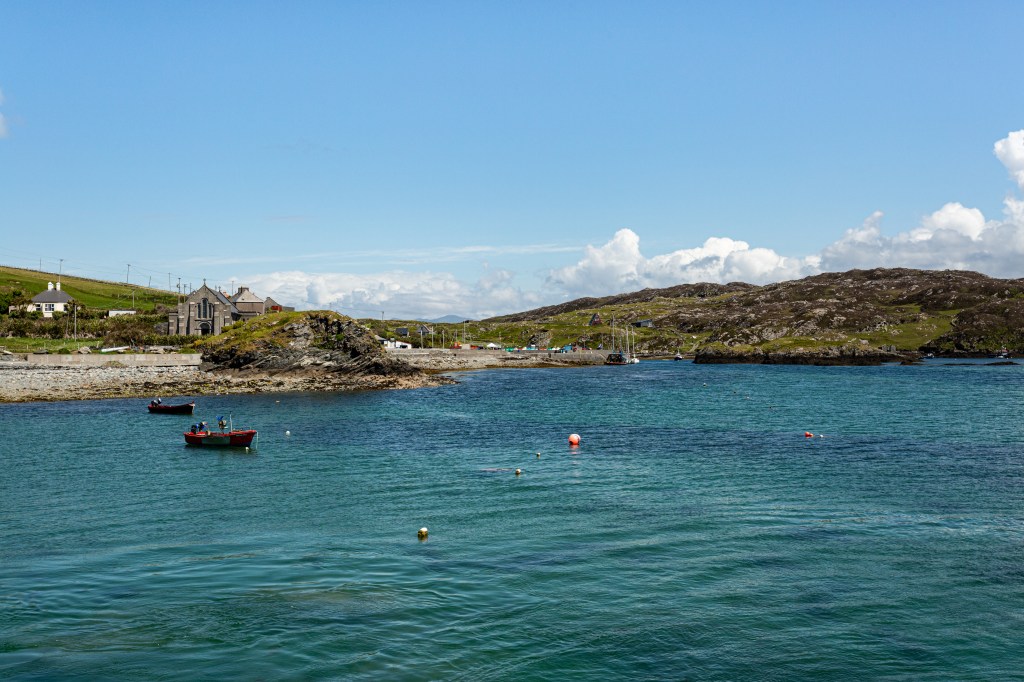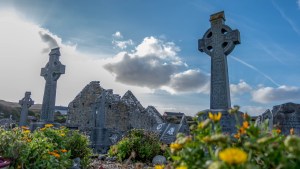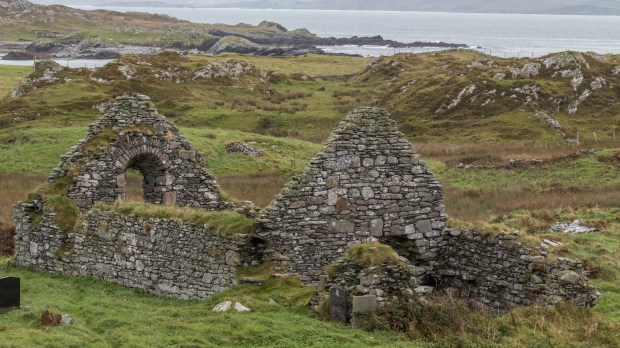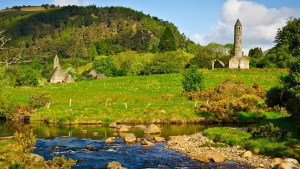Inishbofin, a windswept island off the coast of County Galway, Ireland, guards a treasure of history and faith: the ruins of St. Colman’s monastery. Although ostensibly unassuming, the ruins of this once steadfast structure stand as a witness to centuries of monastic tradition on an island where the rhythm of life is often dictated by the whims of the Atlantic Ocean.
St. Colman of Lindisfarne, the namesake of this church, was a prominent figure in 7th-century Irish Christianity. Born in Connacht and educated in the famed Scottish monastery of Iona, he was the third abbot of Lindisfarne, after Aidan and Finian. Soon enough he found himself at the center of a dispute regarding the calculation of Easter: the Synod of Whitby decided to calculate Easter using the Roman method instead of his preferred Celtic method. As a result, Colman resigned as a bishop, and left Ireland in 664. His journey took him to back to Iona, and ultimately, to the remote Inishbofin.
On Inishbofin, St. Colman established a monastery. And while tensions brewed within his community over differing religious practices and traditions (again, Celtic vs. Roman), he remained a beacon of faith. St. Colman passed away on Inishbofin in 674, leaving an enduring legacy that helped shape Ireland’s spiritual landscape as a whole.

There is a present-day St. Colman’s Church in Inishbofin. While built in the early 20th century, it stands on the hallowed ground where Colman’s monastery once thrived. Remnants of the earlier monastery, including ancient cross slabs and a bullaun stone (a hollowed rock used for religious purposes), can still be found in the vicinity.
St. Colman’s Church, though humble, possesses a quiet beauty. Its walls speak of resilience against the relentless Atlantic winds, while its interior provides a place for quiet contemplation. Though no longer the island’s primary church, it serves as a powerful reminder of Inishbofin’s deep-rooted Christian heritage.
Visitors to St. Colman’s Church will be rewarded with a glimpse into the island’s past – a past marked by the monastic tradition that St. Colman helped grow, and the generations who followed in his footsteps. Its captivating, solitary presence in the landscape is but a sample of the enduring pull of the remote and beautiful Inishbofin.



